Explore our IP Address Database Downloads for instant access to our IP address insights
Learn moreWhy you need to give away your API for free
Developers will stumble upon your site with varying degrees of urgency.
Some don’t have a specific end goal in mind; they’re toying around with a new app concept and seeing whether they can rig together an MVP. Others are looking for a quick solution right here, right now. They need an API that will save them hours of work and help them meet a launch date.
To get your product used by the maximum number of people, you need to minimize the time-to-call — the amount of time that passes between a developer first learning about your product and making the first API request.
There are a few ways that you can minimize that time-to-call:
- Build out interactive sandboxes on your documentation pages (like Formspree)
- Upload a collection of examples into Postman, so devs can try making calls from there (like Clearbit)
- Offer curl commands to get people started from the command line (like IPinfo)
The last option is what I am using with IPinfo, but with a twist: no authentication. By offering curl commands (and other language wrappers) straight from documentation without an account, any developer can start using the API immediately. I can also recommend the IPinfo API on Stack Overflow or other developer forums, knowing that the examples will work straight out of the box.
What began as a single free API turned into a full-blown acquisition strategy for my API business. Here’s how I started making money by giving away a $0 registration-free API.
Start by Giving It Away for Free
A few years ago, I had created a free API to answer someone’s question on Stack Overflow. In my reply, I provided a detailed answer to his question, an overview of what I had built, a code snippet, and a link.
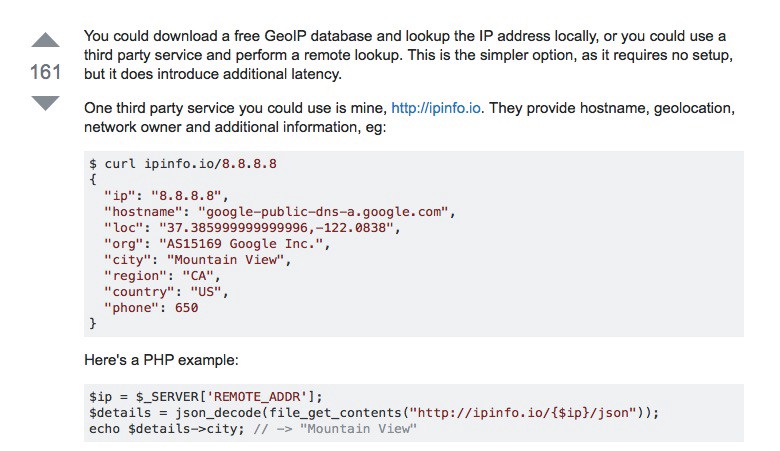
I wasn’t thinking about turning a profit then, I was just focused on providing a solution for one developer. When a few months later that free API was getting 250,000,000 daily requests, I knew I had done something right — I had an acquisition strategy before I had a business. Eventually, I built that business, quit my job, and now run a profitable API-first company.
I did everything bass-ackwards, but when I think about reverse-engineering the success of that single API, it always comes down to time-to-call.
Developers who saw my answer on Stack Overflow didn’t need to click through to IPinfo to learn about how my product works. They could highlight, Ctrl-C, and paste right into their terminal. Between hearing the word “IPinfo,” and learning how it works, there was no friction, whatsoever.
Once the developers did click into IPinfo.io, they’d see a screen that automatically ran the command from the browser. They were looking at their own IP address, hostname, network, latitude and longitude, and area code — and still had the opportunity to try it from their command line.
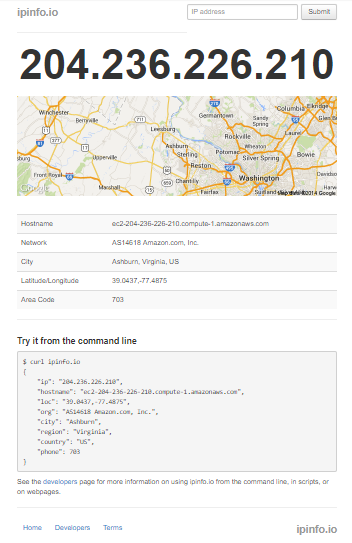
When developers are testing out half-a-dozen APIs, they don’t want to read through docs or sign up for a product to learn about how it works. The faster you can provide value, the easier it will be for developers to try your product and recommend it to others.
Then, Ditch the Sign-Up
Most API companies choose Freemium as their pricing strategy — they have a free tier that lets developers use their product with some restrictions, and then offer an unrestricted, “premium” service as an upgrade.
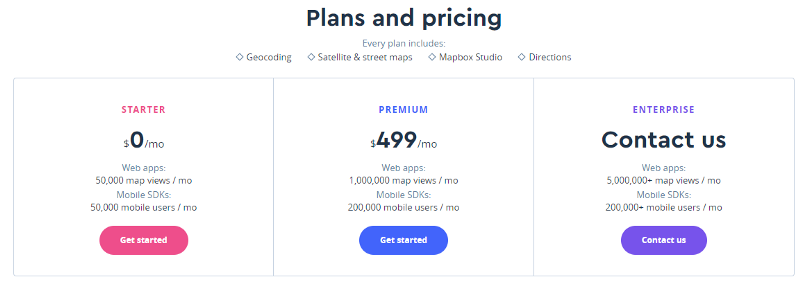
Offering a free tier enables developers to try before they buy so that they can be sure that your API will actually work with what they’re trying to build. The only issue is that the majority of companies still require developers to register before using their free product.
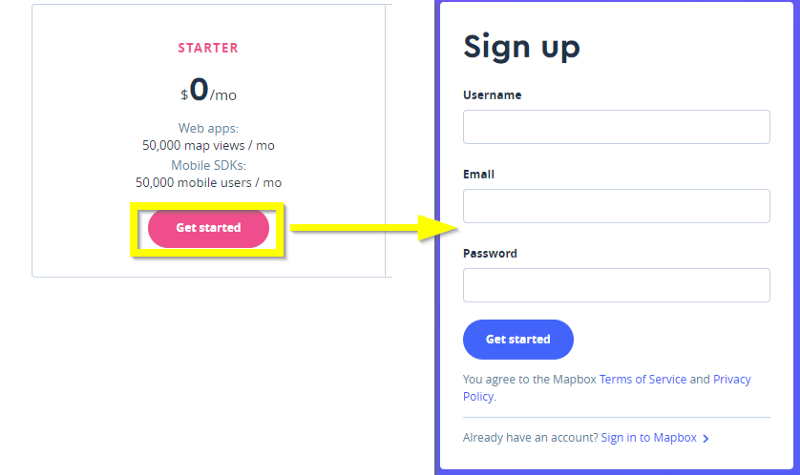
While these companies aren’t asking site visitors to commit with a credit card, they are asking them to give up their time and their contact information. Devs who’ve just read your docs, or just tried a single curl command, aren’t ready to give up their email and be hassled forever. The barrier to entry is simply too high.
That’s why we’ve chosen to keep our free tier registration-free as well. Our developer’s page has always given developers everything they need to integrate the API:
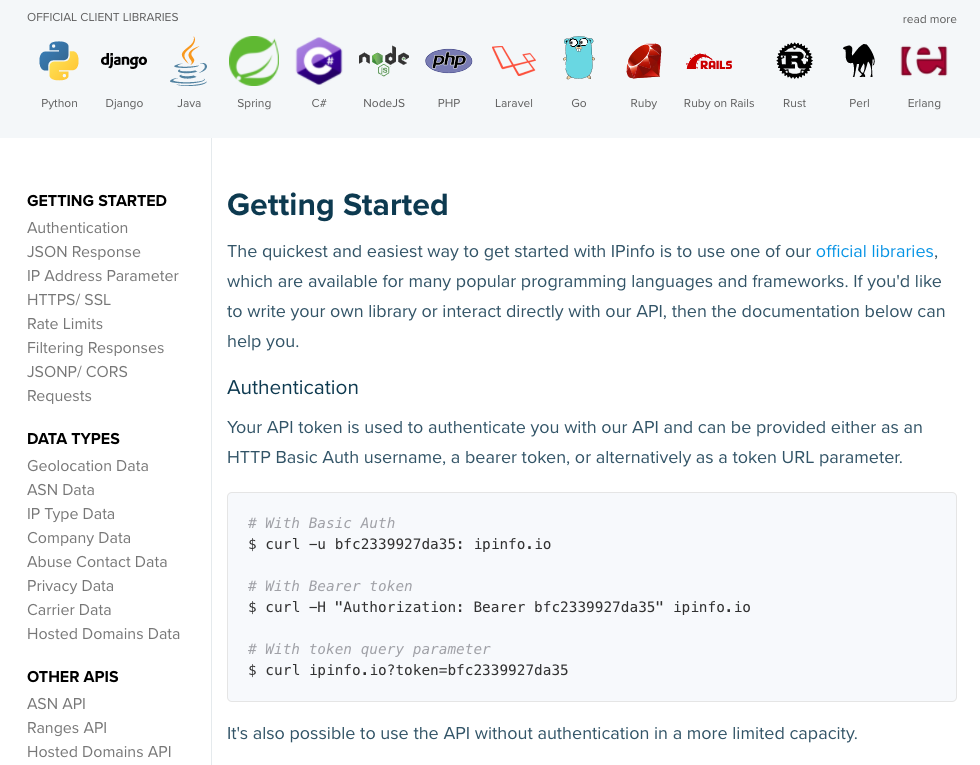
Unlike other “free” products, we never asked users to provide their emails or create usernames — we just gave them the product, no strings attached. This reduced friction for curious developers, and as an added bonus, inspired goodwill in the dev community.
Today, we offer a premium tier, but we still don’t require users to register when they use the free product. This practice not only minimizes the time-to-call to get more eyes on the product but also inspires confidence in our API. While the traditional version of freemium feels like a thinly-veiled marketing ploy, which becomes apparent as soon as users receive that first drip email, this version feels more genuine. You’re leaving it up to the users to decide for themselves whether they find enough value in your product to upgrade.
Setting up Freemium Without Registration
Deciding what’s free and what’s premium is a delicate balancing act. Give away too much, and you won’t make any money. Give away too little, and you still won’t make any money as no one will be interested enough to upgrade.
There are three components to giving away part of your product for free:
- Packaging: What will people pay for? The ideal ratio of free-to-paid users is said to be 10:1, and the only way to get there is by talking to your existing users. Learn about what projects they’re working on, and where they find value. Try and set limitations in your free tier that enable developers to get a sense of what the API is capable of, without giving away so much that they can build a business off of your API.
- Security: How do you make sure they pay for it? If you don’t require users to register, you need some other way of making sure developers don’t misuse the free tier. The best way to do this is to monitor usage based on IP address. There are workarounds (as always), such as setting up proxy servers, but they’re too timely and expensive for most developers.
- Conversion: How do you nudge users towards premium? Without an email address on file, you can’t blast developers with emails, asking them to sign up. Instead, you have to nudge developers back to your paid plans whenever you have an opportunity. You can do this on your landing page and in your documentation, but the best place to do it is in context — when they’re making the API call. You can include a human-readable error message in the status code that points developers back to the site.

While you should give these components considerable thought the first time around, what’s even more important is that you measure results, talk to your users, and improve the balance over time. Then, you can use limited, free access to your product as an acquisition strategy, without sacrificing profit.
Keep It Simple
API companies that are well-known and well-integrated into the ecosystem don’t often offer free tiers. Enough people know about Twilio and Stripe, for example, that they can get away with offering just a short trial period.
But for an API product, the early days are the toughest. The nature of APIs means that there’s already a lot keeping a potential user from discovering value. They need to figure out what your API does, learn how to use it, and figure out whether it fits their existing project. Anything that slows down this process further, such as a paywall or a sign-up form, will drastically limit the number of developers who become interested in your product.
IPinfo is a comprehensive IP data and API provider with flexible pricing plans to meet your business needs. We handle billions of API requests per month, serving data like IP geolocation, ASN, mobile carrier, and other. Sign up for a free account or contact our data experts to learn more.
About the author

Internet Data Expert